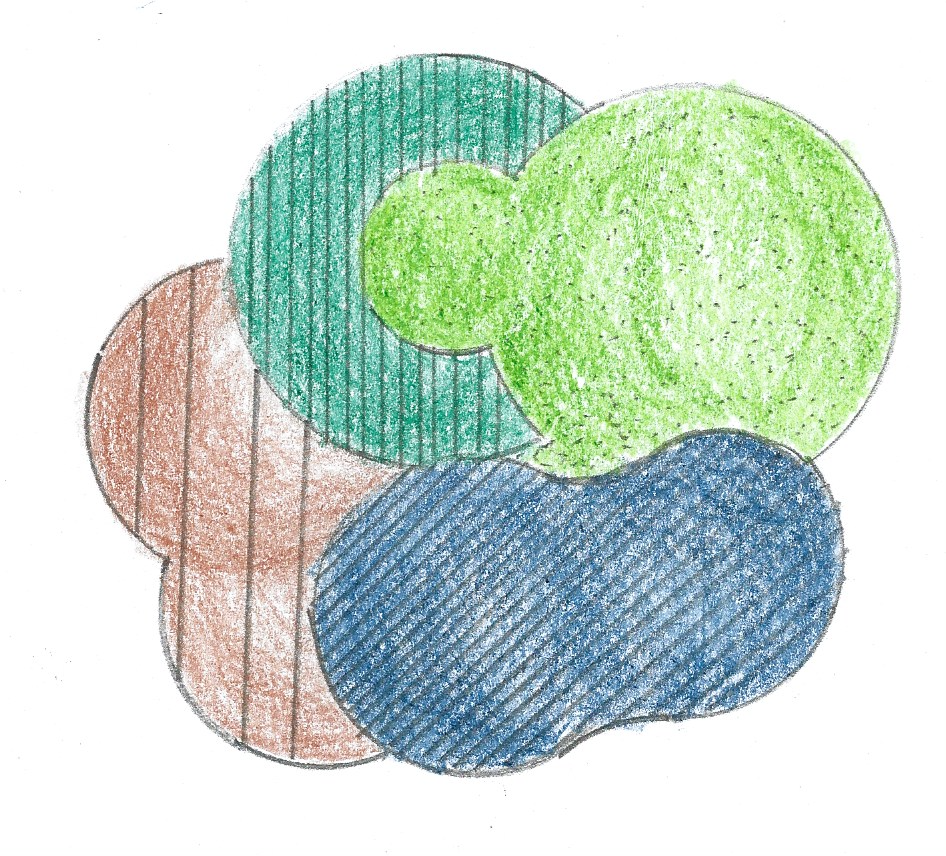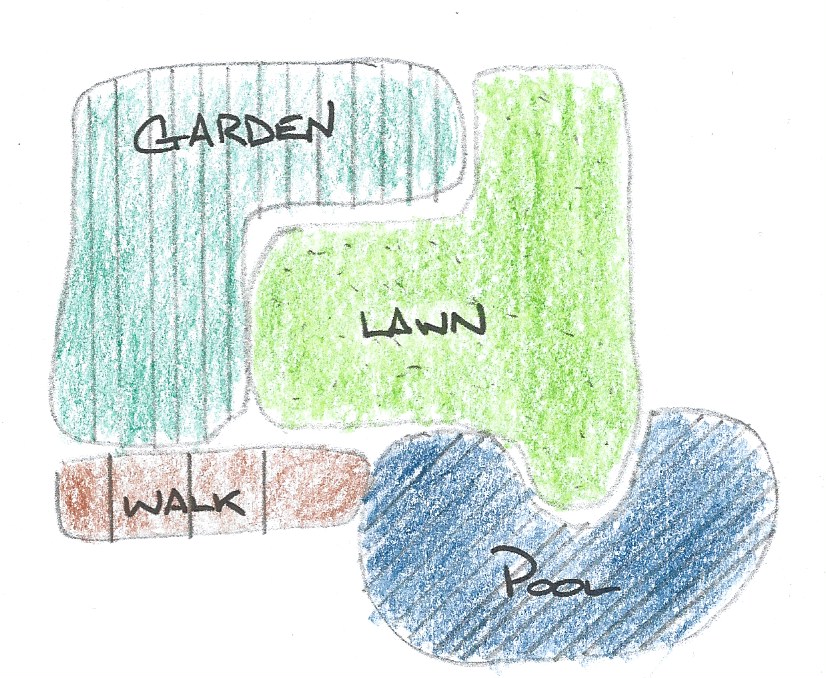How Lines and Shapes Take Form in WaterSpace Designs
Every WaterSpace Starts with a Line that Takes a Form that Becomes a Plan.
Lines make Shapes, and when a shape becomes part of a formal design it is called a Form. This may seem a trivial matter of word choice, but they are important distinctions when designing your WaterSpace.
In the previous article on shape, I introduced the bubble diagram as your design’s starting point. The bubble is your Functional Diagram. It’s an invisible framework that your eye won’t see in the finished design. But your mind will sense its presence because it provides the functional order of where major things are placed.

The bubble diagram helps the designer and client sort out how major elements are to be placed in your WaterSpace.
The illustration here shows how a designer transforms an initial bubble diagram into a formal composition. In this case we’ve used circular forms (shapes) to bring four major pieces—garden, lawn, pool and walk—into a visually appealing design.
Creating this visual order with line and form is a critical step in arriving at a successful design. The lines of your design theme— circular lines in this example—allow the elements to relate in a coherent design. It provides the critical visual order your mind seeks.
Without a consistent design theme, the design breaks apart into its various pieces. Minds and bodies will never be comfortable in an environment of unrelated parts. The secret to pleasing design is consistency in both placement and choice of shapes. This brings us back to the line and the shapes they form.

Next comes the Form Composition that sets the design theme.
A line can go on forever—to infinity—except when you connect it to another line. Of all the shapes you can make with a line, the circle is the most pleasing. A circle is a perfect curve, the completed line that has a center point but no beginning or end. Circles and their 3-D form, the sphere, are found in the natural word wherever you look, from the sun and moon to the roundness in so many living things, right down to the pupils of your eyes.
Of course, it would really get boring—even look unnatural—if everything were circular. There are many other interesting forms that designs can take. Squares and rectangles make for more formal designs that can evoke anything from traditional to modernistic themes. Turn those forms at an angle and you have diagonal shapes, definitely more modern.
From circular you can go to a curvilinear theme that may take on a Mid-Century Modern vibe or an organic, natural feel. Mix rounded and straight lines and you have an arc and tangent theme. Or go whole-hog-modern art with an abstract irregular theme.
Whatever theme you and your designer choose, the art of the design will be determined by how well it all hangs together. Repetition of your basic shapes, for example, is pleasing to the eye. Also called unity, repetition is one of the seven principles of design, which includes symmetry, balance, emphasis, contrast, movement and negative space.
All those concepts and more will be covered in future articles, as we delve deeper into designing your own WaterSpace.

